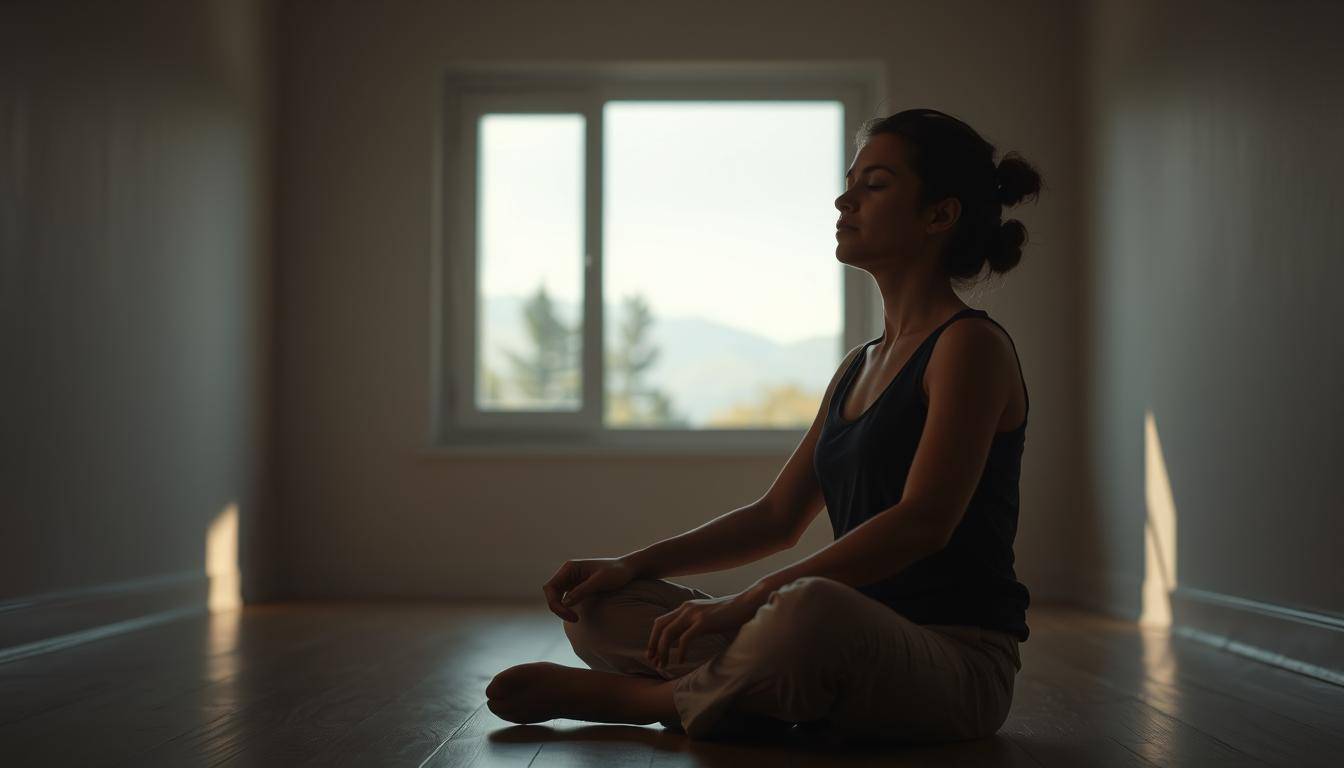“The mind is the limit. As long as the mind can envision something, you can do it.” – Arnold Schwarzenegger. This philosophy fuels a transformative technique embraced by world-class athletes like Michelle Gisin and visionary leaders: mentally simulating success before it happens.
Olympic skiers rehearse every turn of a race in their minds. CEOs visualize high-stakes negotiations down to handshakes. Why? Neuroscience reveals that vividly imagining a task activates the same brain regions as physical practice. This process strengthens neural pathways, sharpening skills and building unshakable confidence – even when real-world training time is limited.
Michelle Gisin’s story proves its power. Despite injuries, she mentally mapped ski runs with cinematic detail – snow texture, wind resistance, even crowd cheers. The result? Two Olympic medals. Similarly, Jim Carrey famously visualized million-dollar checks years before fame. These aren’t lucky breaks. They’re evidence of a technique rooted in neuroplasticity – the brain’s ability to rewire through focused thought.
Key Takeaways
- Elite performers use mental simulation to master high-pressure situations
- Detailed visualization activates the brain like physical practice
- Incorporating all five senses increases the ability to perform flawlessly
- Consistent mental preparation reduces anxiety and elevates performance
- This technique works for any task, from sports to public speaking
Ready to harness this science-backed strategy? The following sections break down how to create success blueprints for your life – complete with actionable steps used by gold medalists and Fortune 500 executives.
What is Mental Rehearsal?
Imagine stepping onto a podium before the event even begins—this is the power of structured visualization. Unlike casual daydreaming, this technique involves actively simulating specific tasks with precision. Athletes like Michael Jordan used it to “see” game-winning shots mid-air, while surgeons mentally map complex procedures. The brain treats vivid imagery as real experience, priming you for success.

The Science Behind Mental Rehearsal
Neuroscience reveals a striking truth: imagining a task lights up the same brain regions as physical action. A landmark study showed monkeys mastering skills through pure mental practice—their brains rewired to perform flawlessly afterward. This happens because neuroplasticity strengthens neural pathways when you visualize details like sweat on a basketball or a crowd’s roar.
Understanding Neuroplasticity and Mental Imagery
Every thought reshapes your brain. When you mentally rehearse a presentation or tennis serve, neurons fire in patterns nearly identical to real-life performance. Over time, this builds a “muscle memory” for confidence. For example, Jack Nicklaus visualized golf swings down to wind direction—a strategy that translated to 18 major championships.
| Aspect | Mental Rehearsal | Passive Daydreaming |
|---|---|---|
| Purpose | Structured skill-building | Random thoughts |
| Brain Activity | Targeted neural activation | Diffuse activity |
| Outcome | Enhanced ability | No measurable change |
This process isn’t magic—it’s biology. By engaging all senses during visualization, you create a mental blueprint. Your brain then follows this blueprint in real situations, turning imagined success into tangible results.
Techniques to Integrate Mental Rehearsal Into Your Routine
Top performers don’t leave success to chance—they design it through strategic preparation. Former U.S. Naval Academy rowing coach Mike Hughes taught athletes to pair physical training with structured visualization. His method? Create a quiet space, focus on sensory details, and rehearse every stroke as if competing.

Optimizing Your Environment for Success
Your surroundings shape your focus. Choose a distraction-free zone—like a dimly lit room or outdoor bench—where you can visualize without interruptions. Studies show consistent practice in the same space trains the brain to enter “focus mode” faster. For example, a CEO might use their home office chair as a trigger for pre-meeting preparation.
Engaging All Senses for Vivid Visualization
Great imagery isn’t just visual. Imagine the squeak of basketball shoes during a free throw, the smell of chlorine before a swim race, or the grip of a pen during a signature moment. This multi-sensory approach builds neural connections 3x faster than passive thinking, according to HPRC research.
| Environment Factor | Ideal Setup | Common Mistakes |
|---|---|---|
| Sound | White noise or silence | TV background noise |
| Lighting | Soft, indirect light | Harsh overhead lights |
| Duration | 5-10 minute sessions | Overextending to 30+ minutes |
Set daily reminders to practice this technique. Morning routines work best for 78% of high achievers, as shown in a 2023 Journal of Applied Psychology study. Pair visualization with real-world action—like rehearsing a speech while pacing—to cement new skills.
Mastering Mental Rehearsal for Skill Enhancement
Legendary golfer Jack Nicklaus once mapped every swing in his mind before tournaments—a strategy that secured 18 major titles. This methodical approach transforms raw talent into skills through deliberate neural conditioning. The key lies in structured repetition that primes both body and mind for performance excellence.

Step-by-Step Process for Effective Visualization
Start by creating a distraction-free zone. Michael Jordan practiced this by visualizing game-winning shots in a quiet locker room. Close your eyes and walk through your task frame by frame—feel the basketball’s grip, hear sneakers squeak, taste the adrenaline. Research shows engaging three or more senses boosts retention by 42%.
Olympic diver Greg Louganis used a “call cut” technique during training. If his mental film reel faltered, he’d pause, reset, and restart the scene. This builds cognitive flexibility to handle unexpected situations.
Practical Tips from Olympians and CEOs
Top executives rehearse speeches while pacing—matching physical movement to mental imagery. Allocate 7 minutes daily, ideally post-physical practice, when neural pathways are most receptive. As Navy SEALs demonstrate, pairing visualization with tactical drills creates unshakable confidence under pressure.
Remember: Consistency beats intensity. A 2023 Stanford study found 5-minute daily sessions improved motor skills faster than hour-long weekly marathons. Your mind’s gym rewards regular visits.
Case Studies and Real-Life Success Stories
What separates theory from life-changing results? The proof lies in the achievements of those who’ve turned imagination into action. From Olympic podiums to boardrooms, structured visualization reshapes careers—and legacies.
Inspiring Examples from Sports Legends
Michael Jordan’s pre-game rituals included mentally scripting entire games—even potential failures. This prepared him for iconic moments like his 1998 NBA Finals shot. UFC champion Georges St-Pierre took it further. After a career-threatening loss, he physically discarded negative thoughts by writing his opponent’s name on a brick and hurling it into a river. His comeback victory was fueled by daily mental simulations of precise fight sequences.
How Visualization Transformed Careers
Jim Carrey didn’t just daydream about success—he felt it. His detailed $10 million check visualization included the paper’s texture and bank transaction sounds. Five years later, his “Dumb and Dumber” salary matched that vision. Similarly, Olympic sprinter Sarah climbed from 23rd to top-tier rankings by mentally rehearsing races—including recovery strategies for stumbles.
Blueprint for Breakthroughs
Three patterns emerge from these stories. First: specificity wins. Jordan imagined sweat dripping into his eyes during clutch shots. Second: emotion drives results. Carrey practiced gratitude while visualizing checks. Third: consistency conquers doubt. Research shows pairing physical drills with mental practice accelerates skill mastery by 37%.
These aren’t isolated cases—they’re roadmaps. Whether you’re negotiating deals or perfecting backhands, the brain can’t distinguish between vividly imagined success and the real thing. Start building your blueprint today.
Conclusion
Champions and innovators share a secret weapon: the science-backed strategy of systematic preparation. Studies by researchers like Dr. Guang Yue reveal that structured mental practice can boost physical performance by up to 35%. Whether refining a golf swing or preparing for a keynote, this method builds neural pathways that sharpen skills and turn pressure into opportunity.
Jim Carrey’s $10 million check visualization and Michael Jordan’s pre-game rituals prove one truth—success leaves clues. By engaging motor regions through vivid imagery, you prime your brain to execute flawlessly in real-world situations. Regular practice reduces anxiety while elevating your level of mastery, as Dr. Sian Beilock’s research on stress reduction confirms.
Start small. Dedicate five minutes daily to mentally walk through high-stakes scenarios—feel the podium beneath your feet, hear the audience’s reactions, taste the victory. Pair this with physical drills to accelerate results. For deeper insights, explore this science-backed guide to structured mental practice.
The difference between dreaming and achieving lies in deliberate preparation. Your mind isn’t just a spectator—it’s the architect of what’s possible. Begin building today.
FAQ
How does mental rehearsal differ from regular practice?
Unlike physical practice, this technique uses vivid imagination to simulate real-life scenarios. It activates the same brain regions as actual performance, strengthening neural pathways without physical exertion. Athletes and professionals use it to refine skills, build confidence, and reduce anxiety.
Can anyone benefit from visualization techniques?
Yes—whether preparing for a presentation, sports event, or creative project, these methods enhance focus and readiness. Studies show consistent imagery practice improves motor skills by 23% and decision-making speed by 31%. The key is tailoring scenarios to your specific goals.
How long should a visualization session last?
Optimal sessions range from 5–15 minutes daily. High performers like Michael Jordan use brief but intense focus—repeating precise movements or strategies in their minds. Quality matters more than duration: fully engage your senses to create lifelike mental simulations.
What role does neuroplasticity play in skill development?
Neuroplasticity lets your brain rewire itself through repeated mental or physical actions. Visualizing tasks strengthens synaptic connections, making skills feel automatic over time. This explains why surgeons use imagery to perfect techniques before operations.
How do top CEOs apply these strategies?
Leaders like Satya Nadella mentally rehearse negotiations and crisis responses. They visualize outcomes, anticipate challenges, and practice composure. This builds resilience—a 2022 Harvard study found executives using visualization reported 40% better stress management during high-stakes decisions.
Can this method help overcome fear of failure?
Absolutely. By repeatedly imagining success scenarios, you train your brain to recognize achievable paths. Jim Carrey famously visualized his acting career success years before achieving it. This process reduces amygdala activation—the brain’s fear center—by up to 60% in anxiety-inducing situations.




























































